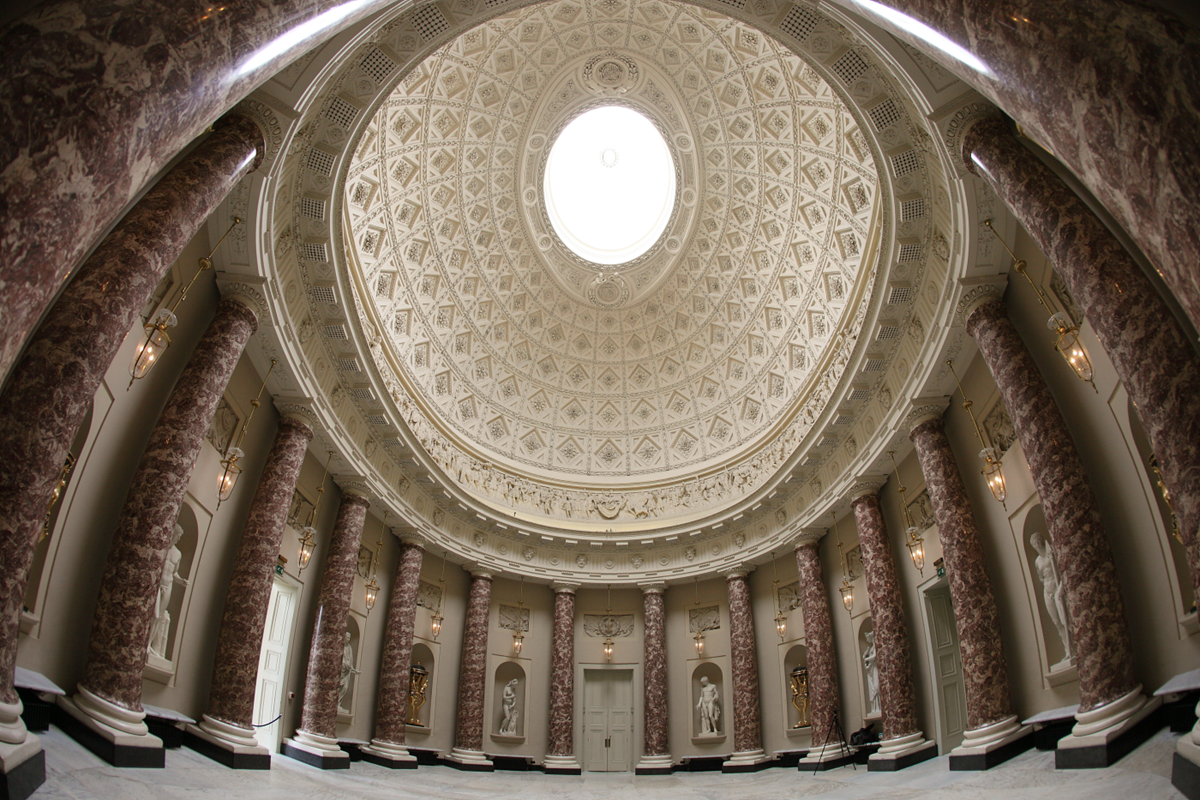Restoration Intern Marble Saloon Tennis Courts
27 July 2015

In July 2003 SHPT began restoration work on the Marble Saloon. This project, bound to restore magnificence to Stowe instantaneously, with the unique and beautifully ornate domed roof and marble floor, was funded by the American philanthropist Robert W. Wilson. The World Monuments Fund, awarded a $600,000 WMF Robert W. Wilson Challenge grant to SHPT, with matched funding for the restoration of the Marble Saloon. Wilson had originally committed to funding restoration of the South Front, before diverting his support to the Marble Saloon where, perhaps he thought, his money would recreate lasting magnificence.
The first major task required delicacy, and many cleaning products!
A central grate, which had provided the Marble Saloon with its heating throughout the eighteenth century, had caused a thick, sooty build-up within it. Conservators cleaned away the grime to reveal the depth and intricacy of the design.
There were also details of the frieze missing, and it transpired that Stoics (old Stowe School pupils) had gained access to the frieze and run precariously around the narrow ledge pulling off plaster limbs and moving spears. In between daily assemblies, which occurred in the Saloon, it amused the boys to spot the differences, an age- old classic, to alleviate boredom.
These were replaced, and a tennis ball, which had become lodged between two coffers during a particularly athletic or competitive match - to have gotten lodged so high - was an unexpected addition! It was retained either for historic (or comic) value, or because removal would have caused damage.
It remains to be asked whether the Saloon was a standard location for sports at Stowe. The tremendous acoustics afforded by the high ceilings, and the protruding, rounded columns adding an unpredictable element to play as balls ricocheted any which way, would have made for an interesting hybrid game of tennis and squash. Niche extensions from the walls to hold statues could have enabled a very real sense of audience: all in all, a court to rival Wimbledon’s- grass, clay, tarmac, marble… and, what next?
The majority of the restoration work was completed in July 2005, just two years after it had begun. It was the first state room to be restored to its pre-1848 state.
In 2009 statues were added that had been made from casts currently situated in the Berlin State Museums, restoring the room to maximum effect. While not exact copies of the statues which once adorned this space, their generic type is correct, examples being Meleager and Julius Caesar. There are eight statues in total, the originals all sold in 1848, with the remaining four central niches holding Athéniennes or torchères. Two of the original torchères remain at Stowe but have been deemed too delicate to restore. Today you see fibreglass copies.
It truly is an awe-inspiring room and another world, up and above the grandeur of the other rooms - literally, with its roof peaking over them all. The fact that it has been the home of both exuberant racket sportsmen and Julius Caesar makes its history all the more vibrant, and its restoration all the more special, to Stowe.